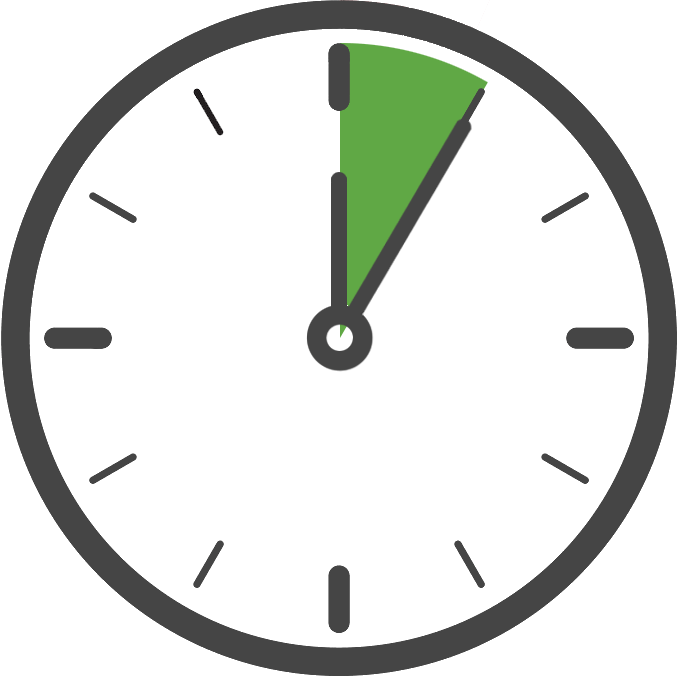This feature is available only with paid Kochava accounts. Contact us to learn more.
The Kochava SDK is a javascript-based solution that provides marketers with Web Tracking capabilities. It can be integrated with a variety of web-based frameworks; this document describes how to integrate with the Next.js framework. If you have already integrated the SDK and started it, please visit Using the SDK support document and choose a topic.
Integrating the SDK
Integration:

Estimated Time to Complete
5 Minutes
The Kochava SDK is available for Next.js projects as a normal npm package. It provides a class called <Kochava, which contains all necessary Kochava SDK functions and behavior.
- Install the Kochava SDK via NPM by running in the root of your project directory (where package.json is located). For more installation options, see our NPM Installation page.
- After running the command above, confirm that kochava version 3.0.1 or later was added in your package json. At this point the SDK has been installed and is ready to use.
Starting the SDK

Estimated Time to Complete
1 Minute
In order for the SDK to start operating, the Kochava class must be instantiated once with a valid configuration. Because Next.js handles rendering on the server, the Kochava SDK must be explicitly called in-browser. Below is the recommended example for how to start the SDK.
Once you have added the Kochava SDK to your project, the next step is to create and start the SDK in code. Only your App GUID is required to start the SDK with the default settings, which is the case for typical integrations.
We recommend starting the SDK as soon as the application starts, although it can be done later if needed. Starting the tracker as early as possible will ensure it’s started before use, resulting in more accurate data/behavior.
Within your App component (_app.js), use the State and Effect hooks to create a variable to hold the kochava instantiation, then import kochava into a temporary variable and call startWithAppGuid using a valid Kochava App GUID. Load the temporary kochava object into the kochava variable, and then pass this object, via props, to the pages you’d like to gather data from.
Example (Start Kochava in the Root Component) —
import { useState, useEffect } from 'react'
function MyApp({ Component, pageProps }) {
const [kochava, setKochava] = useState(null)
useEffect(() => {
( async () => {
if(typeof window !== "undefined" && !kochava){
const {Kochava} = (await import('kochava'))
let kochavaLocal = Kochava.createForReact();
// Optional pre-start calls would go here
kochavaLocal.startWithAppGuid("YOUR_APP_GUID")
setKochava(kochavaLocal);
}
})()
}, [kochava])
return
}
export default MyApp Replace <YOUR_APP_GUID with your Kochava App GUID. For more information on locating your App GUID, refer to our Locating your App GUID support documentation.
Optional Configuration
From here on, the SDK is integrated and ready, the following configuration calls are optional, and are only for special desired SDK behavior. The following code snippets should be placed at in the above snippet, at the comment labeled .
Disable Automatic Page Events:
Call this function with an argument of true to stop the SDK from automatically signaling a page event when the SDK starts.
import { useState, useEffect } from 'react'
function MyApp({ Component, pageProps }) {
const [kochava, setKochava] = useState(null)
useEffect(() => {
( async () => {
if(typeof window !== "undefined" && !kochava){
const {Kochava} = (await import('kochava'))
let kochavaLocal = Kochava.createForReact();
// Auto pages will be sent (default)
kochava.disableAutoPage(false);
// Auto pages will not be sent
kochava.disableAutoPage(true);
kochavaLocal.startWithAppGuid("YOUR_APP_GUID")
setKochava(kochavaLocal);
}
})()
}, [kochava])
return <Component {...{...pageProps, kochava: kochava}} />
}
export default MyAppUse Cookie Storage:
Call this function with an argument of true to drop the Cookie on the website to track a device across sub-domains.
import { useState, useEffect } from 'react'
function MyApp({ Component, pageProps }) {
const [kochava, setKochava] = useState(null)
useEffect(() => {
( async () => {
if(typeof window !== "undefined" && !kochava){
const {Kochava} = (await import('kochava'))
let kochavaLocal = Kochava.createForReact();
// Will not use cookies (default)
kochava.useCookies(false);
// Will use cookies
kochava.useCookies(true);
kochavaLocal.startWithAppGuid("YOUR_APP_GUID")
setKochava(kochavaLocal);
}
})()
}, [kochava])
return <Component {...{...pageProps, kochava: kochava}} />
}
export default MyAppNext.js Examples
Example (Access Kochava from a Component) —
export default function Home(props) {
const [kochava, setKochava] = useState(null)
if(typeof window !== "undefined" && !kochava){ //in-browser check and !kochava prevents 'too many re-renders'
if(props.kochava)
setKochava(props.kochava)
}
useEffect(() => {
( async () => {
if(typeof window !== "undefined" && kochava){ //in-browser check
kochava.sendPageEvent() //example event to run on page load
}
})()
}, [kochava])
return (...)
}Confirm the Integration
After integrating the SDK and adding the code to start the measurement client, launch and run the app for at least 10 seconds or more. During this time the client will start and send an install payload to Kochava. To confirm integration was successful, visit the app’s Install Feed Validation page Apps & Assets > Install Feed Validation. On this page you should see one of two integration messages, indicating integration success or failure.
Integration Successful
Along with this message you will also see a variety of data points associated with the device used for testing. At this point your integration is successful and you can proceed to the next step(s).
Integration Not Complete
If you encounter this message, please review the integration steps, uninstall and reinstall the app, and check again.
Where to Go From Here:
Now that you have completed integration you are ready to utilize the many features offered by the Kochava SDK. Continue on to Using the SDK and choose a topic.


